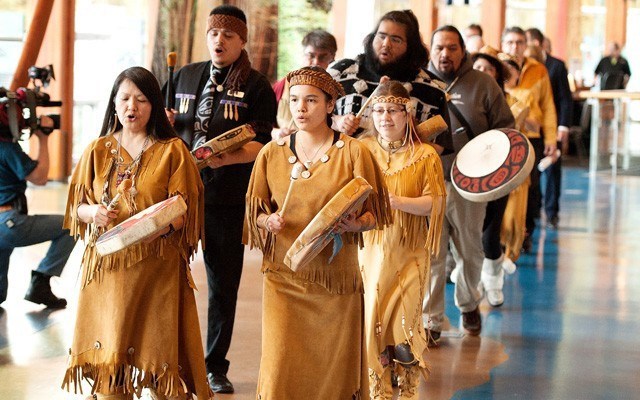Following the adoption of Whistler’s updated Official Community Plan on June 23, the province announced a new Framework Agreement between itself, the Resort Municipality of Whistler (RMOW), the Squamish and Lil’wat Nations and Whistler Blackcomb on Friday.
The agreement expands on and supercedes previous understandings between the parties, including a Memorandum of Understanding (MOU) signed in 2017 and a Protocol Agreement in 2018.
Where the MOU laid out key interests to be explored, “this is where we’re committing to these arrangements,” said outgoing Whistler chief administrative officer Mike Furey.
“It’s an agreement between the parties that really provides for greater opportunities for the Lil’wat and Squamish to work with Whistler and the RMOW on economic development, tourism opportunities, and promoting cultural awareness.
“Really, in my mind, it’s a reconciliation agreement between our communities.”
The Framework Agreement details the Emerald/Kadenwood land exchange, the formation of an Economic Development Committee and the potential development of Whistler Blackcomb Option Sites in partnership with the Nations—all of which were first mentioned in the 2017 MOU.
With the Kadenwood/Emerald swap (which was a straight land exchange, meaning no money was included), the RMOW will receive the lands adjacent Emerald Estates, allowing it to finally restore access to the trails and other recreational opportunities in the area.
The Lil’wat and Squamish will receive the Kadenwood lands—about nine hectares adjacent the existing development—on which the RMOW will support a new site-specific zone for “site sensitive and slope-responsive development of a mix of low and medium density detached duplex and townhouse dwellings that may also be used for tourist accommodation, with auxiliary residential dwelling units for employee housing,” as laid out in the OCP.
Asked about the development value of the Kadenwood lands, Furey said it would depend on the timing, and how the Nations choose to pursue development.
“If you look at that schedule in the OCP, it does talk about the opportunity for single-family dwellings, low- to medium-density in there,” he said. “So I don’t have any estimate on what the value would be, and it would be reflective of what the market is and the costs of servicing the lots, etc.”
The new Economic Development Committee will be made up of reps from both the Lil’wat and Squamish Nations, as well as the RMOW, and will serve multiple purposes: oversee progress on Kadenwood development and other projects; seek longer-term development opportunities for the Nations on lands they own or may acquire in the future; facilitate an open and ongoing dialogue between the parties; and carry out other responsibilities related to economic development opportunities for First Nations.
In the longer term, the committee will consider: the parties’ commitment to reconciliation, acknowledging that it has an economic component; tourism trends, market indicators and market demand (including affordability); Whistler Blackcomb’s MDAs and Master Plans, and the Option Sites identified within them; the need to balance resort and community capacity; and the growth principles outlined in Whistler’s new OCP.
As for the Option Sites, the Agreement states that “the Parties agree the [committee] will explore appropriate development opportunities that may be undertaken in joint venture between the First Nations and Whistler Blackcomb within the CRA Lands, including the Option Sites and South Base to seek mutually agreeable outcomes.”
The sites have been included in Whistler Blackcomb’s Master Development Agreement with the Province for some time, Furey noted.
“Those particular sites are called options because the mountain has an option to purchase them from the province,” he said.
“I know of no plans that the mountain has, or a timeline to look at developing those, but I can tell you they would go through a full rezoning process, and there would be obviously extensive community engagement on any development of those sites.”
The Agreement between the parties is “historic,” said minister of municipal affairs and housing Selina Robinson, in a release.
“After many years of negotiations and a lot of work on the part of the Squamish and Lil’wat Nations, the Province, Resort Municipality of Whistler and Whistler Blackcomb, I am excited to see this agreement finalized,” Robinson said.
“This step empowers the community to move forward with its partners on planning the future of Whistler, one of B.C.’s cherished resort destinations.”
The agreement also formally removes the requirement for ministerial approval in future updates of Whistler’s OCP.
“The Lil’wat Nation is pleased to support the Resort Municipality of Whistler’s Official Community Plan and looks forward to continued consultation on future amendments,” said Lil’wat Political Chief Dean Nelson in the release.
“Our support comes after many years of engagement and discussions. The cornerstone of this approval is the continued commitment to relationship building and creating opportunities for Lil’wat within their traditional territory.”
Find the release here.
Pick up next week’s Pique for more.




